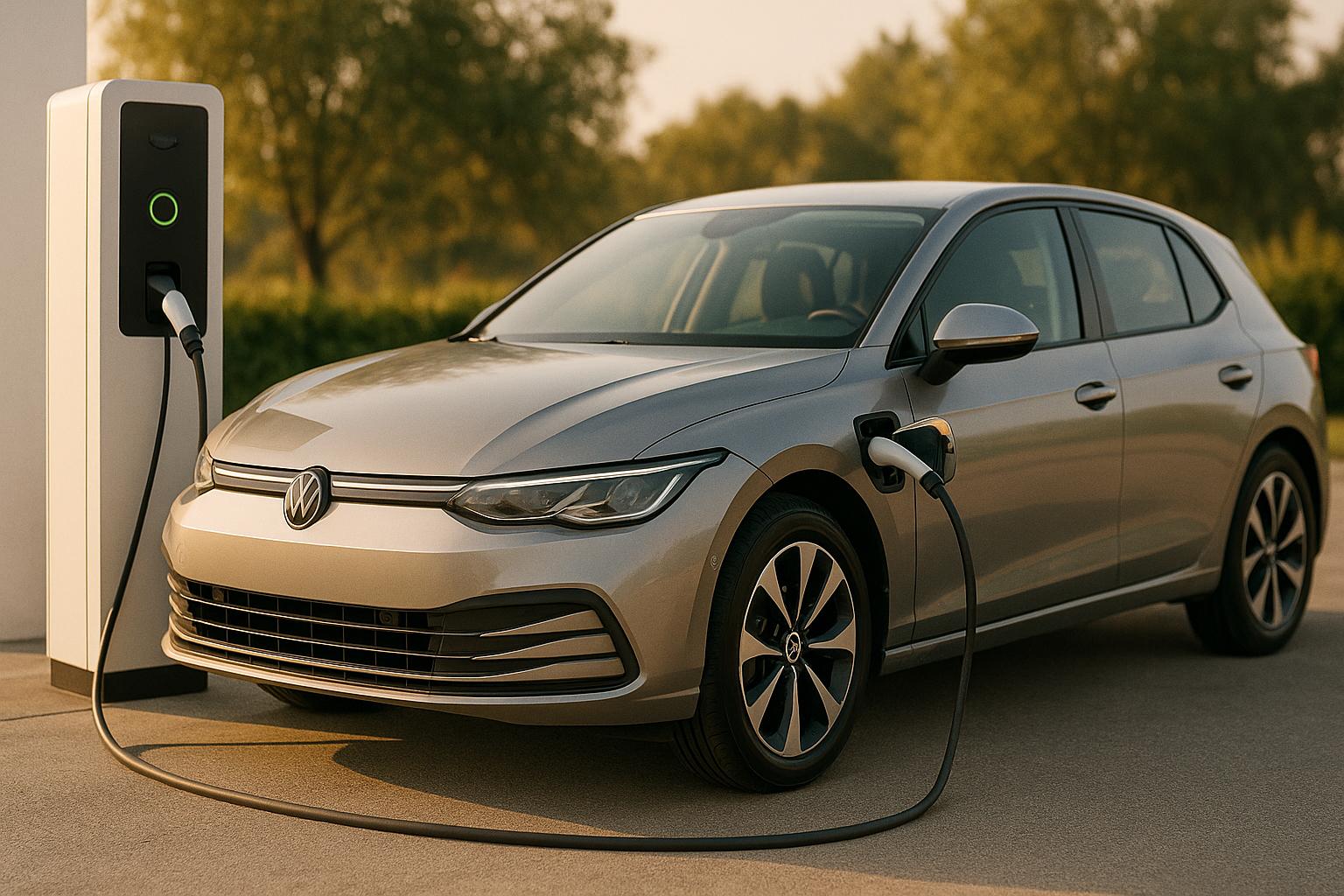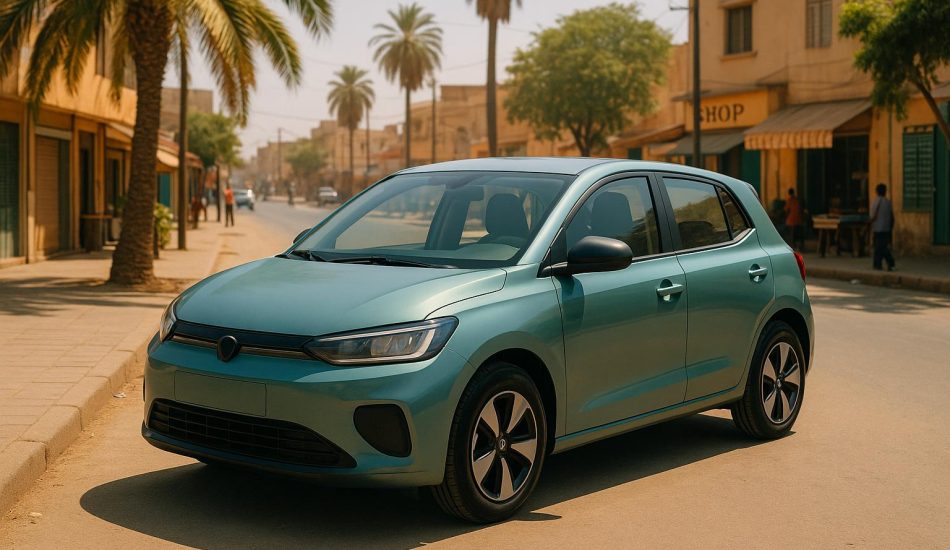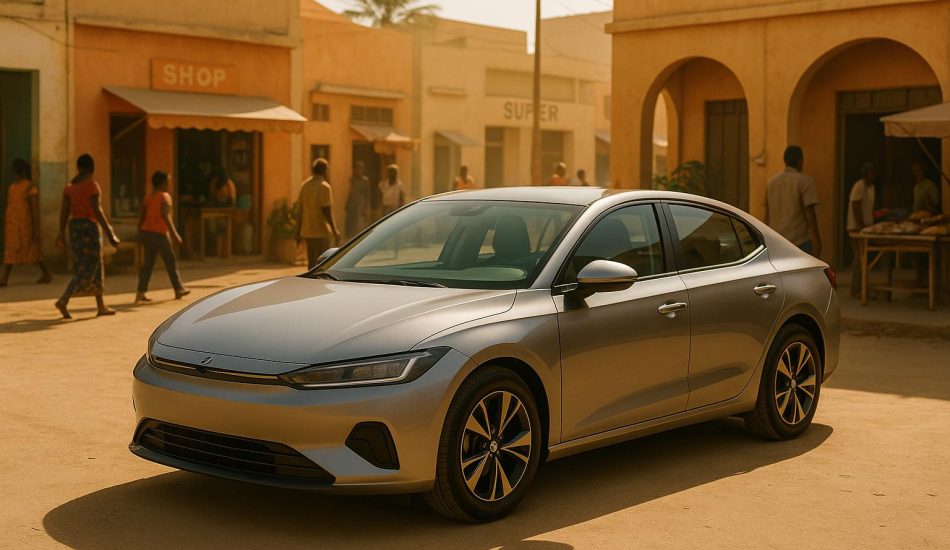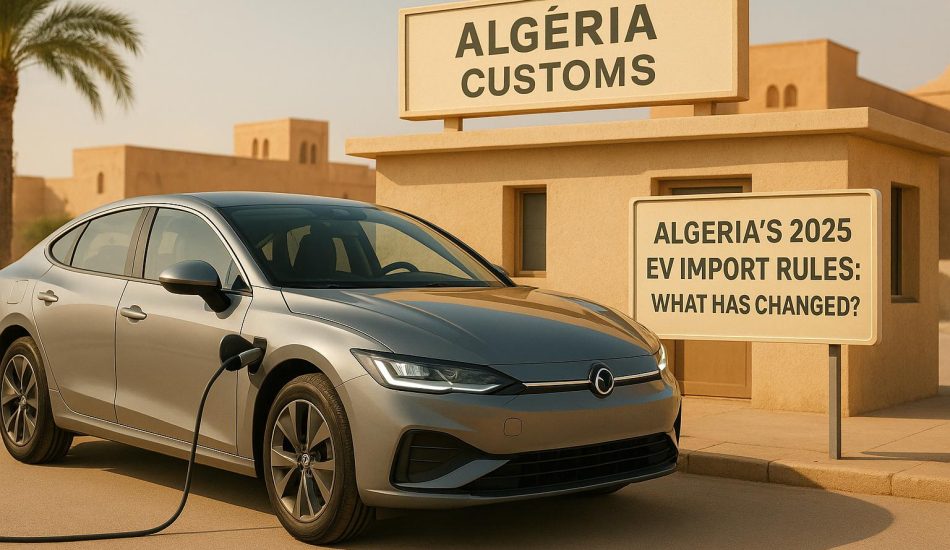
Electric vehicles (EVs) are cars powered by electricity instead of gasoline or diesel. They use a battery to store energy, which drives an electric motor to move the wheels. EVs are known for being efficient, quiet, and producing zero tailpipe emissions. They come in three types:
- Battery Electric Vehicles (BEVs): Fully electric, no gas engine, zero emissions.
- Plug-in Hybrid Electric Vehicles (PHEVs): Use both electricity and gas, offering flexibility for longer trips.
- Hybrid Electric Vehicles (HEVs): Combine gas engines with electric motors but don’t plug in to charge.
Charging is simple, with three levels available:
- Level 1: Standard outlet, slowest option.
- Level 2: Faster home or public charging.
- DC Fast Charging: Quickest, ideal for long trips.
EVs cost less to operate than gas cars and require minimal maintenance. However, upfront costs, range limits, and charging infrastructure vary by location. In Africa, platforms like EV24.africa are helping make EVs more accessible with financing options and delivery services across the continent.
A Complete Beginner’s Guide to Electric Vehicles
How Electric Vehicles Work
Electric vehicles (EVs) operate on a simple yet powerful idea: instead of relying on fuel combustion in a traditional engine, they use electricity stored in a battery pack to power an electric motor, which drives the wheels. This streamlined setup often results in better efficiency and reliability. Let’s break down the key components that make this process possible.
Battery Storage and Power Delivery
The battery pack is the core of every EV, acting as its energy reservoir. When you press the accelerator, direct current (DC) electricity flows from the battery to the motor through a control system. The motor then converts this electrical energy into mechanical energy, generating the torque needed to turn the wheels. One standout feature of electric motors is their ability to deliver torque instantly, which is why EVs feel so responsive when you hit the pedal.
Efficiency is another area where EVs shine. Electric motors convert about 90% of the electrical energy into motion, whereas gasoline engines only manage around 30%, with the rest wasted as heat and noise. This stark difference highlights why EVs are often seen as a more efficient option.
Charging Process
Charging an EV is straightforward – think of it like plugging in your phone, but on a larger scale. There are three main charging methods, each suited to different needs:
- Level 1 Charging: This uses a standard 120-volt household outlet and typically adds 4–5 miles of range per hour. Most EVs come with a Level 1 charging cable, so no extra equipment is required.
- Level 2 Charging: With a 240-volt outlet, this method provides about 25 miles of range per hour. Many EV owners install Level 2 chargers at home for faster and more convenient charging.
- DC Fast Charging (Level 3): The fastest option, DC fast chargers can take an EV battery to 80% in just 20 minutes to an hour, adding 180–240 miles of range in approximately 20–40 minutes. These chargers are commonly found along highways and in commercial areas.
For Level 1 and Level 2 charging, the vehicle’s onboard charger converts alternating current (AC) from the power grid into direct current (DC) for the battery. DC fast charging, however, skips this step by delivering DC power directly to the battery, significantly speeding up the process.
Benefits for the Environment
One of the standout advantages of EVs is their zero tailpipe emissions. Unlike gasoline-powered cars that release carbon dioxide, nitrogen oxides, and other pollutants, EVs operate without producing any exhaust. This cleaner operation not only helps reduce air pollution but also aligns with broader environmental goals.
The simpler design of EV drivetrains also means less maintenance. Forget about oil changes, transmission fluid, engine coolant, or spark plugs – EVs don’t need them. This not only saves money but also reduces the environmental burden of manufacturing and disposing of these components.
Many EVs also feature regenerative braking, a clever system that captures energy during braking and uses it to recharge the battery. This not only extends the vehicle’s range but also reduces wear on the brake pads. Even when considering the electricity used for charging, EVs generally produce fewer total emissions compared to gasoline vehicles – especially as renewable energy becomes a larger part of the grid.
Main Parts of Electric Vehicles
Getting to know the main components of an electric vehicle (EV) can help you understand how they differ from traditional gas-powered cars. Each part has a specific job, working together to turn stored energy into motion. Here’s a closer look at the major components that drive EV performance.
Traction Battery Pack
The traction battery pack serves as the heart of an EV, storing the energy needed to power the entire drivetrain. Unlike the small 12-volt batteries in gasoline cars that only start the engine, EV battery packs operate at much higher voltages – typically between 400 and 800 volts – and hold enough energy to cover hundreds of miles on a single charge.
Most EVs rely on lithium-ion batteries because they offer a great balance of energy density, weight, and durability. These packs are made up of thousands of individual cells grouped into modules, which are then assembled into a complete battery pack. Manufacturers usually position the pack low in the vehicle’s floor, which helps lower the center of gravity. This design not only improves handling but also enhances stability.
To keep the battery running efficiently, a battery management system (BMS) monitors key factors like temperature and charge levels. The BMS ensures that each cell charges and discharges evenly, preventing damage and extending the battery’s life. With proper care, most EV batteries retain about 80% of their original capacity even after 8-10 years of use.
Electric Motor and Power Electronics
The electric motor is what transforms the DC electricity from the battery into mechanical energy to move the wheels. EVs commonly use either AC induction motors or permanent magnet synchronous motors. These motors are far simpler than internal combustion engines, which have hundreds of moving parts.
Electric motors deliver maximum torque instantly, even at zero RPM, which is why EVs are known for their quick acceleration. Unlike traditional cars, most EVs don’t need multi-speed transmissions because the motor can operate efficiently across a wide range of speeds. A single-speed transmission is often all that’s required.
The power electronics controller manages the flow of electricity between the battery and the motor. It converts the battery’s DC power into AC power (in most cases) and controls how much power is delivered based on how hard you press the accelerator. This system also governs regenerative braking, which reverses the motor’s function to act as a generator, sending energy back to the battery when the car slows down.
In advanced EVs, power electronics enable features like torque vectoring. This allows all-wheel-drive vehicles to control power delivery to individual wheels, improving traction and handling in tricky conditions.
Charging and Support Systems
Several additional systems ensure the EV runs smoothly and charges efficiently. These include the charge port, onboard charger, DC-to-DC converter, and thermal management system. Most EVs use the J1772 connector for AC charging, while DC fast charging often relies on CCS (Combined Charging System) connectors.
The onboard charger plays a key role by converting AC electricity from the power grid into DC electricity that the battery can store. Depending on its rating – usually between 6.6 kW and 22 kW – it can significantly reduce charging times when using Level 2 chargers.
A DC-to-DC converter steps down the high-voltage power from the main battery to supply the vehicle’s 12-volt systems, such as lights, infotainment, and safety features. This replaces the alternator found in gas-powered cars.
The thermal management system ensures that all components operate within their ideal temperature range. The battery, electric motor, and power electronics generate heat during use, so cooling systems – often using liquid coolant similar to a radiator – are essential. Some EVs even pre-condition the battery while plugged in, warming or cooling it before you start driving to maximize range and performance.
These support systems work quietly in the background but are crucial for ensuring that EVs are reliable and efficient. Together, these components create a seamless driving experience, making EVs a practical and modern choice for everyday transportation.
Types of Electric Vehicles
Electric vehicles (EVs) come in a variety of configurations, each designed to meet different driving needs and preferences. These options balance factors like range, efficiency, and practicality, offering solutions for diverse lifestyles. The main types of EVs differ based on how they use electric and gasoline power sources.
Battery Electric Vehicles (BEVs)
Battery Electric Vehicles (BEVs) are fully electric, relying entirely on energy stored in their batteries. They don’t have a gasoline engine, which makes them the cleanest option among EVs in terms of emissions. When people talk about "electric cars", they’re often referring to BEVs.
Some popular BEVs include:
- Tesla Model 3: Offers a range of up to 358 miles.
- Chevrolet Bolt EV: Delivers around 259 miles per charge.
- Ford Mustang Mach-E: Provides between 247 and 312 miles, depending on the battery configuration.
Because BEVs run exclusively on electricity, they produce zero direct emissions and typically require less maintenance than cars with traditional engines, thanks to fewer moving parts.
However, range planning is crucial with BEVs. While newer models boast impressive ranges, having access to charging stations is key for longer trips. Most BEV owners charge their vehicles at home overnight, much like charging a smartphone. For those looking for a mix of electric and gasoline power, other options offer additional flexibility.
Plug-in Hybrid Electric Vehicles (PHEVs)
Plug-in Hybrid Electric Vehicles (PHEVs) combine the benefits of an electric motor with the reliability of a gasoline engine. This setup allows drivers to use electricity for short trips and switch to gasoline for longer journeys.
PHEVs typically offer an electric range of 20–50 miles. For example:
- Toyota Prius Prime: Provides about 25 miles of electric-only range.
- BMW X5 xDrive45e: Offers approximately 31 miles of electric range.
Once the battery is depleted, the gasoline engine takes over seamlessly, making PHEVs a great choice for those with short commutes who also enjoy occasional road trips. Most daily driving can be completed on electricity alone, reducing fuel costs and emissions.
While PHEVs are generally less expensive than BEVs due to their smaller battery packs, their dual-powertrain design can lead to slightly more complex maintenance needs. For a simpler hybrid option, HEVs might be worth considering.
Hybrid Electric Vehicles (HEVs)
Hybrid Electric Vehicles (HEVs) also combine a gasoline engine with an electric motor, but they don’t rely on plug-in charging. Instead, the battery is recharged through regenerative braking and energy from the gasoline engine. The Toyota Prius is one of the most well-known HEVs.
In an HEV, the electric motor assists the gasoline engine during acceleration and can power the car at low speeds (under 25 mph) for short distances. This collaboration improves fuel efficiency significantly compared to traditional gasoline vehicles.
Popular HEVs include:
- Toyota Camry Hybrid: Achieves about 52 mpg combined.
- Honda Accord Hybrid: Offers approximately 48 mpg combined.
Although HEVs produce fewer emissions than conventional cars, they still depend primarily on gasoline for power.
Choosing between BEVs, PHEVs, and HEVs depends on factors like your daily driving habits, access to charging stations, and comfort with newer technologies. Each type offers unique advantages to suit different lifestyles and preferences.
sbb-itb-99e19e3
Benefits and Things to Consider
After diving into how EVs work and their essential components, it’s time to look at the practical perks and key factors to consider. Electric vehicles (EVs) come with clear advantages, but weighing these against your needs ensures you make a smart decision.
Benefits of EVs
Zero Direct Emissions are a standout advantage of electric vehicles. Unlike traditional gasoline-powered cars, EVs don’t release pollutants through tailpipes. This means cleaner air in cities and a smaller carbon footprint – especially when charged using renewable energy like solar or wind.
Lower Operating Costs make EVs appealing for the long haul. Electricity is much cheaper than gasoline per mile driven. On average, charging an EV costs about the same as paying $1.00 per gallon of gas. Plus, EVs require less maintenance since they have fewer moving parts. Forget about oil changes, spark plugs, or transmission repairs.
Quieter Operation is another bonus. Electric motors run almost silently compared to gas engines, cutting down on noise pollution. This makes for a peaceful ride, whether you’re driving through a busy city or starting your car early in the morning.
Instant Torque and Smooth Acceleration give EVs a performance edge. Electric motors deliver maximum torque right away, so EVs accelerate quickly from a stop. This responsiveness often makes them feel more powerful than many gas-powered cars. And since there’s no gear shifting, the ride is incredibly smooth.
Energy Independence is possible if you charge your EV at home using solar panels or other renewable sources. This reduces your reliance on fluctuating gas prices and foreign oil, giving you more control over transportation costs.
While these benefits are compelling, it’s just as important to consider practical factors like range and charging.
What Buyers Should Know
EVs bring plenty of advantages, but there are a few things to keep in mind before making the switch.
Range Considerations are crucial. Modern EVs typically offer ranges between 200 and 400 miles per charge, but factors like weather, driving speed, and climate control use can affect this. For instance, cold weather can lower range by 20-40%, and high speeds on highways also reduce efficiency. While most daily commutes fall well within these ranges, longer trips will require some planning.
Charging Infrastructure varies depending on where you live. Urban areas tend to have more charging options than rural ones. For most, a Level 2 home charger (installation costs range from $500 to $2,000) is enough for overnight charging. Public fast chargers, on the other hand, can provide a significant range boost in 30-60 minutes, but they’re not as quick as a 5-minute gas station stop.
Upfront Purchase Price may seem steep, but incentives and lower running costs help bridge the gap over time. Federal tax credits of up to $7,500 are available for qualifying vehicles, and many states offer additional rebates. When you factor in savings on fuel and maintenance, the overall cost of ownership often tilts in favor of EVs after 5-7 years.
Battery Degradation happens gradually, much like it does with smartphones. Most EV batteries retain 80-90% of their original capacity after 8-10 years of regular use. To ease concerns, manufacturers typically offer warranties covering batteries for 8 years or 100,000 miles.
Driving Habits Impact Range more noticeably in EVs than in traditional cars. Quick acceleration, high speeds, and heavy use of air conditioning or heating can all reduce range. However, regenerative braking – where energy is recovered during deceleration – helps offset some of these effects.
Electric Vehicles in Africa
Electric vehicles (EVs) are transforming transportation across Africa, aligning with the global shift toward cleaner and more efficient mobility solutions. Platforms like EV24.africa are at the forefront of this change, making it easier for Africans to buy and sell EVs.
On EV24.africa, you’ll find a diverse selection of new and pre-owned EVs, including popular brands like Tesla, BYD, and Toyota. Each listing provides essential details such as range, charging time, and battery capacity, helping buyers make informed decisions.
The platform ensures pricing is upfront and transparent, eliminating surprises for buyers. To address the higher initial costs often associated with EVs, multiple financing options are available, making EV ownership more attainable.
EV24.africa also delivers vehicles to all 54 African countries, bridging the gap for customers in more remote areas. This service ensures that quality EVs are accessible no matter where you are, breaking down traditional geographical barriers. The platform creates a seamless experience not just for buyers but for sellers too.
Sellers can opt for a free Basic Listing or enhance their visibility with Premium and Dealer Plans, offering flexibility to suit different needs. This balanced marketplace connects buyers and sellers, fostering the growth of EV adoption across the continent.
Conclusion
Electric vehicles represent a major shift in transportation, paving the way for cleaner and more efficient alternatives to traditional gasoline-powered cars. By relying on battery power and electric motors, they move us away from combustion engines and toward a more sustainable future.
The three main types of electric vehicles cater to different needs: Battery Electric Vehicles (BEVs) operate entirely on electricity, providing zero-emission driving; Plug-in Hybrid Electric Vehicles (PHEVs) combine electric power with a gasoline engine for added flexibility; and Hybrid Electric Vehicles (HEVs) improve fuel efficiency without requiring external charging.
While EVs come with clear benefits, potential buyers should consider factors like upfront costs, access to charging stations, and range capabilities. These are especially critical in areas where EV adoption is still gaining momentum.
In Africa, the EV market is expanding quickly. Platforms like EV24.africa are making EVs more accessible by offering transparent pricing, financing options, and delivery services across all 54 countries. With well-known brands such as Tesla, BYD, and Toyota becoming widely available, African consumers now have access to a broader range of electric vehicles.
As charging networks grow and battery technology advances, EVs are becoming increasingly practical for everyday use. Whether you’re thinking about buying your first EV or just exploring the technology, understanding these basics will help you make informed decisions.
FAQs
What’s the difference between Battery Electric Vehicles (BEVs), Plug-in Hybrid Electric Vehicles (PHEVs), and Hybrid Electric Vehicles (HEVs)?
Battery Electric Vehicles (BEVs) operate solely on rechargeable batteries. Without a gas engine, they produce zero emissions, making them an environmentally friendly choice for those looking to lower their carbon footprint.
Plug-in Hybrid Electric Vehicles (PHEVs) feature both an electric motor and a gas engine. What sets them apart is their larger battery, which can be recharged by plugging into an external power source. PHEVs can travel short distances on electricity alone before the gas engine takes over.
Hybrid Electric Vehicles (HEVs) also combine a gas engine with an electric motor, but their batteries are recharged internally through regenerative braking and the engine itself. Unlike PHEVs, HEVs can’t be plugged in and rely on the gas engine for extended trips, offering improved fuel efficiency compared to traditional gas-powered vehicles.
What should I know about charging electric vehicles in different areas?
The availability of electric vehicle (EV) charging stations depends heavily on where you are. Cities tend to offer a higher concentration of charging options, including fast chargers, while rural areas often have limited access. This makes careful planning essential, especially for those living outside urban centers.
When evaluating EV charging options, it’s important to consider a few key factors. Look into the availability of chargers near your home or workplace, and determine whether you’ll need standard chargers or faster ones for your needs. Additionally, check if there are any local incentives for installing a home charging station – they can make the process more affordable. For those planning road trips, mapping out routes with accessible charging stations is crucial to avoid interruptions and maintain a smooth journey.
What affects the range of an electric vehicle, and how can you improve its efficiency?
The distance an electric vehicle (EV) can cover on a single charge depends on various factors, such as driving habits, weather conditions, terrain, and vehicle load. Other elements like the EV’s battery condition, tire pressure, and the use of climate control systems also play a role in determining its range.
If you’re looking to get the most out of your EV, consider adopting smooth driving techniques – accelerate and brake gradually, keep your tires properly inflated, and take advantage of regenerative braking. Reducing high-speed driving, limiting the use of heating or air conditioning, and regularly maintaining your EV’s battery can also help boost efficiency. Even small changes like these can significantly enhance your EV’s range and overall performance.




